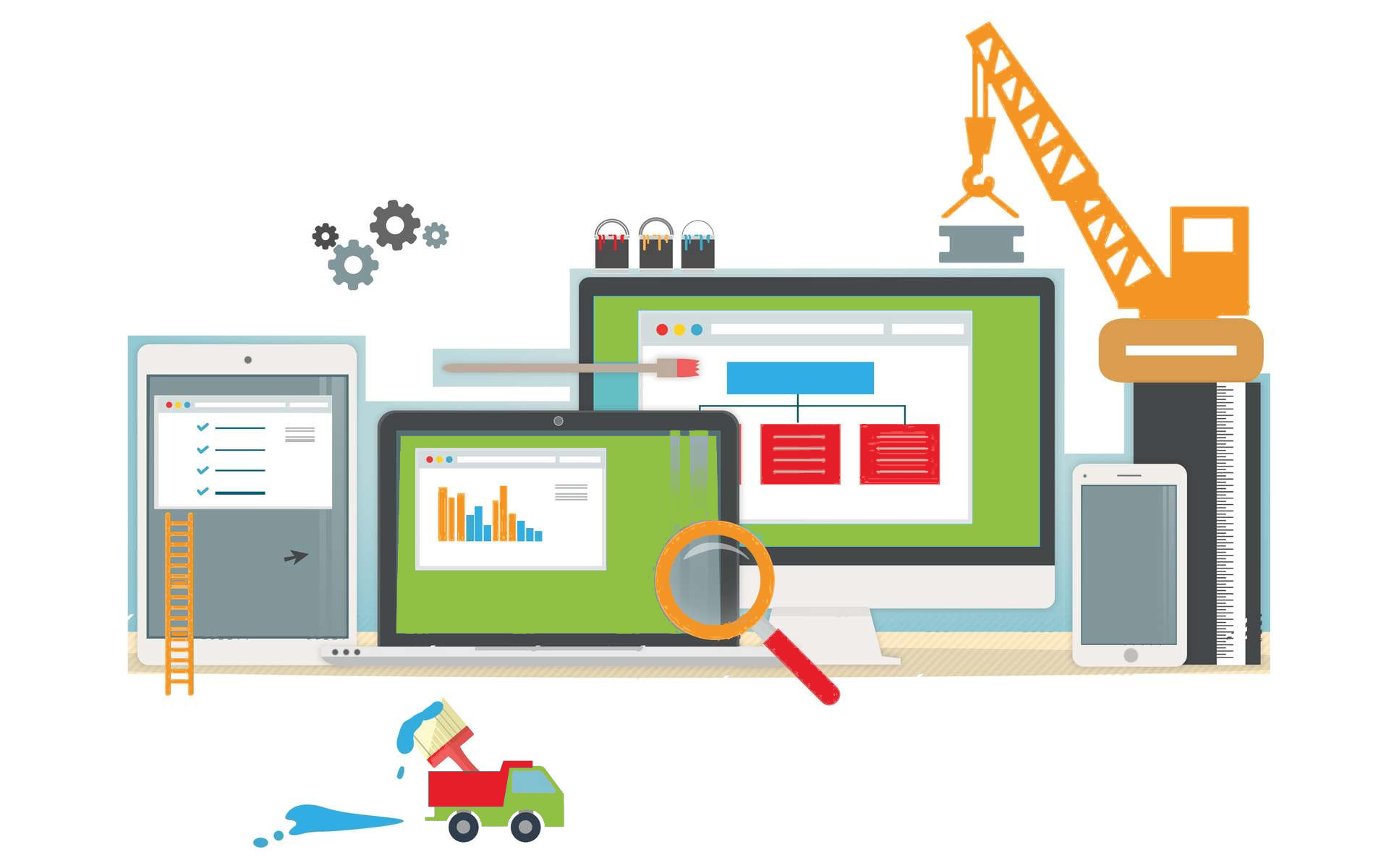
Website production process
In this article, Wedigitalpro presents the production process of professional website, to meet the requirement of high availability.
According to the internetlivestats.com site, which presents live internet figures, at the time of writing this article (August 21, 2020 at 6 p.m.), there are 1,794,127,400 websites online. Obviously by the time you read this article this figure will have increased.
Online websites are only successful website production projects, there are many projects that have not been completed to bring the site online.
There are two types of website. First, we can mention professional sites. Second are amateur websites which are devoted for personal activity.
To produce a personal site, you can afford to first create it and then modify it directly in the host’s server.
It is obvious in this case, that the risk of making errors which will be visible to all live on the site, or even the risk of making the website inaccessible.
Personal website
The consequences of these risks, if they occur, are limited for personal sites:
- a blog about a hobby or a passion …
- a site that presents a center of interest
Visitors will come back another time, or not. Their non-return will have no financial impact on the website owner. Because anyway, its visitors will be indulgent. They don’t expect professional quality, and they’re not demanding.
Professional website
While for a professional website the consequences of these risks are much more impactful:
- Poor quality images
- A decrease in turnover
Customers will instantly turn to its competitors, whose websites are functioning. The impacts are disastrous, he loses the revenue for the period when the website is down, but also the future revenue of any customers who have gone to competing websites.
Malfunctions of professional websites should be avoided as much as possible. For this it is necessary to set up an environment which allows the website to be spared from errors that can be caused by changes and updates.
Any change to the website must be controlled:
- Must be tested before being applied on the online website
- Must be able to be deleted (rollback) if a problem is detected after the change has been implemented
To do this, you need a server of:
- Development
- Qualification
- Pre-production (similar in every way to the host’s server)
- A production server (this is the host’s server).
Well-mastered procedures for moving from one environment to another. and a versioning management system.
The components of a website
All websites have a Front-end and a Back-end.
The Front-end is the user interface that allows content to be presented and its actions to be captured (click, data entry, etc.).
In general this part is built by the languages below:
The back-end is made up of a database which stores the data, and a server which enables the processing and calculation of the data.
Website production is often done in teams
The profiles that participate in the production of professional websites contribute of different kinds. We can cite:
- Project Manager; for the coordination of all participants, and to ensure compliance with customer requirements, budget and schedule
- UI / UX designers to define the customer experience and user interfaces
- Front end developers to develop the user interface with HTML, CSS and javascript while ensuring responsiveness.
- Back-end developers for the creation of the database, development of business rules and APIs.
- Qualifiers to test the proper functioning of the website
- System architects to define and calibrate the elements of the hosting infrastructure (security, backup, redundancy)
- Content editors to create consistent and original content
- SEO experts to ensure the good SEO of the website
Local website production environment
The development environment must contain the components found in the environment of the website host, in this case:
- A web server (usually Apache)
- A database (usually MySQL)
- A web programming language (usually PHP)
There are several solutions that provide a local development environment, which contain the above elements.
Solutions for local website production environment
We will present some tools that allow you to have a development environment.
These tools have some differences, which make them more suited to one context than another
There are three things to understand with this first solution. First, it is perfect for beginners in the development of wordpress. Then it is easy to use. And in the end, it allows you to manage several sites at the same time.
This solution is suitable primarily for developers who wish to master all the components of the environment, with very wide configuration possibilities. And again it is completely free. It contains Apache, MySQL, PHP and Perl.
MAMP is one of the web design tools quite similar to XAMPP, it contains My Apache, MySQL and PHP it is available on Windows and macOS only.
Unlike the tools above, Vagrant allows you to create different virtual environments with different operating systems, web servers, databases …
It is similar to Vagrant, but it offers a dashboard and the ability to map a domain name.
The Wedigitalpro web agency has the infrastructure, experts and professional web design tools.
